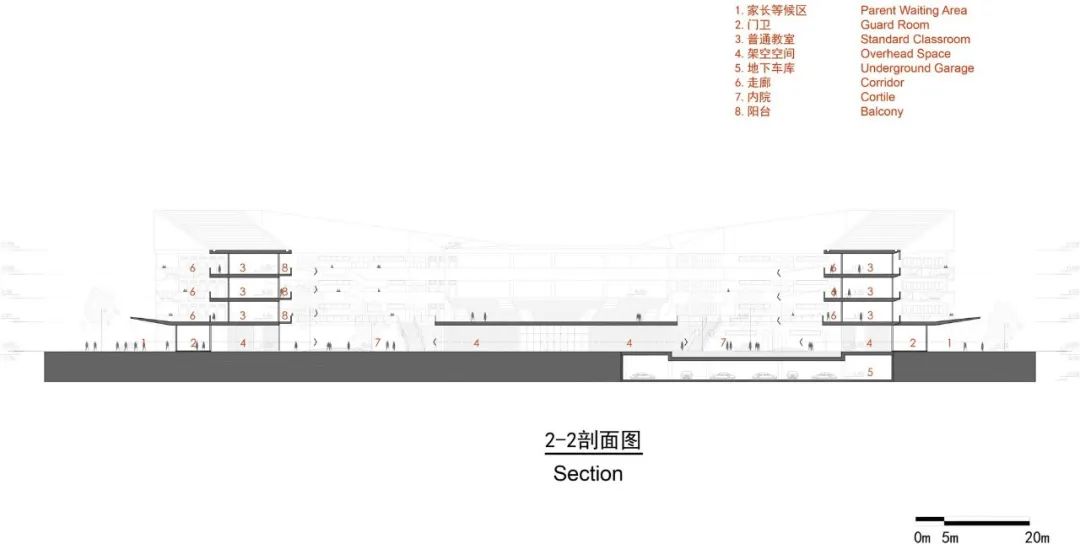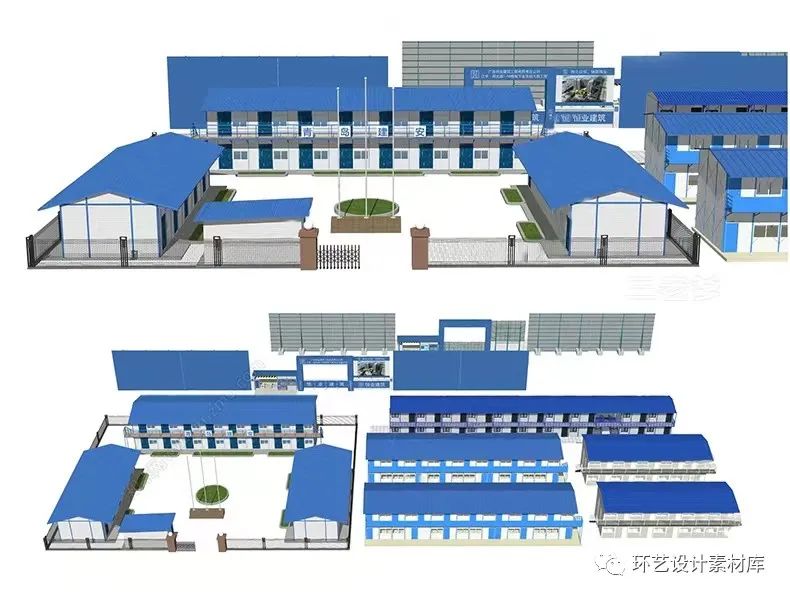The heat consumption of heating is related to the heat demand of building heating determined by the building insulation level, and also related to the operation status of heating system.
The framework of indicators related to building heating energy consumption is shown in Figure 1: the determination methods of each index value are described one by one.
It should be noted that this is the heat measured at the total outlet of the heat source, After deducting about 5% of the heat loss of primary and secondary pipe networks, the actual heat consumption in the building is about 0.45gj / (m2.
With the improvement of the heating system and the increase of attention to people’s living security, most of the actual situations are that the actual heat supply is greater than the heating demand due to various reasons.
Table 1 design heat demand of buildings in different regions of China GJ / (m2.
3.
Urban heat supply network and courtyard pipe network belong to the transmission and distribution system of central heating system, which undertakes the task of transmitting and distributing heat from heat source to building entrance.
Figure 3 Schematic diagram of central heating system Figure 3.1 heat loss rate of pipe network table 2 is the actual test of courtyard pipe network loss of 7 communities in a northern area.
The heat actually sent into the building by the heating system is not equal to the heat required for heating.
When the actual heat sent to the building is less than the heating demand, the room temperature of the heating room is lower than 18 ℃, which does not meet the heating requirements.
The reason why the actual heat consumption of the building is higher than the heat demand is mainly due to the improper adjustment of the heating system, resulting in the mismatch between the heat supply and the heat demand between different rooms in different buildings, and the uneven indoor temperature of each user.
It can be seen that the network loss of central heating system in China is uneven, and the difference is very large..
The heating heat demand per unit building area is related to the shape coefficient of the building, the heat transfer coefficient of the enclosure, the indoor and outdoor ventilation rate and the indoor temperature.
One reason is that the heating system fails to adjust the heating capacity in time according to the climate change, resulting in the system still maintaining a large heating capacity when the weather is warming, resulting in excessive heating of the whole system in the early and late cold periods.
Under the condition of lack of effective adjustment means at the end, in order to maintain the comfort requirements of users with low temperature, The heat source can only increase the heat supply as a whole, which will overheat other users and cause excessive heating loss.
Moreover, in the actual system, the larger the system scale, the more difficult the regulation is, and the higher the degree of excessive heating.
A), which is about 35% higher than the average building heat demand of 0.33gj / (m2.
When the indoor temperature exceeds the building heat demand due to improper operation adjustment, excessive heating will be formed, resulting in the building heating consumption higher than the building heating demand.
Background building heating energy consumption is not only related to the thermal performance of the building itself, but also closely related to the use behavior mode of people in the building, the operation and regulation status of thermal pipe network system, the efficiency of transmission and distribution pipe network and the efficiency of heat source equipment.
In order to evaluate the operation of the transmission and distribution system, it is necessary to evaluate it from two aspects: the heat loss rate index of the pipe network and the power consumption index of the water pump in the pipe network.
It can be seen that with the deepening of building energy conservation, the heating demand of buildings in northern China has been significantly reduced.
1.
2.
A), with an average of about 0.47gj / (m2.
A).
The measured value of building heat consumption index shall be less than the corresponding constraint value of building heat consumption index; If possible, it should be less than the corresponding guide value of building heat consumption index.
The phenomenon is that the room temperature of some users is higher than 18 ℃, and sometimes even higher than 25 ℃.
Based on the current situation of building energy consumption in China, the constraint value is determined according to the building heat consumption level of JGJ26-95 (two-step energy saving) in the design standard for energy efficiency of civil buildings (residential heating part), and the guide value is determined according to the building heat consumption level of jgj26-2010 (three-step energy saving) in the design standard for energy efficiency of residential buildings in severe cold and cold areas.
A).
Figure 2 shows the investigation results of the actual heat consumption of provincial capitals or demonstration cities of heating reform in the north.
One of the main tasks of energy saving of heating system is to reduce the actual excessive heating degree as much as possible through various technologies, policies and mechanisms, so as to make the actual heating amount close to the heating demand as much as possible.
At the same time, too high room temperature causes discomfort to residents.
Building heat consumption index building heating heat consumption is the heat actually sent into the building by the heating system in the heating season.
C1 ~ C18 in the figure are arranged from high to low according to the latitude of the city.
Table 1 shows the heat demand values of residential buildings under different energy-saving standards in different provinces.
Therefore, in the civil building energy consumption standard, for the assessment and management of building heating system energy consumption, in addition to the comprehensive index of building heating system – building heating energy consumption index, the building heat consumption index, pipe network heat loss rate index, pipe network water pump power consumption index and heat source heat conversion efficiency index should also be assessed to evaluate the building heating terminal energy consumption Energy transmission and distribution efficiency and energy conversion efficiency.
The building heat consumption index is obtained from the actual heat demand of the building energy-saving standard plus excess heating.
A) ~ 0.55gj / (m2.
Considering this practical problem, different excess heating rates are given according to the measured data and the system scale.
In these 18 cities, C18 uses coal-fired boilers as the main heat source, C5, C6, C7, C8, C12, C13, C14 and C17 use cogeneration as the main heat source, and C1, C2, C3, C4, C9, C10, C11, C15 and C16 have both heating modes.
Energy consumption index of transmission and distribution system the structure of central heating system in China is shown in Figure 4.
Figure 2 actual heat consumption in different areas (the figure shows the measured heat at the total outlet of heat source) Note: cities C1 ~ C5 are located in severe cold areas, and C6 ~ C18 are located in cold areas.
However, due to the difficulties in control and regulation and the difficulties in the implementation of various incentive energy-saving mechanisms, it is difficult to completely eliminate the phenomenon of excessive heating.
It can be seen from the figure that the actual heating heat consumption of cities and towns in the heating area in the north of China is generally 0.4gj / (m2.
This was a common situation in winter in cities in northern China.
The heat demand of building heating is the heat required to meet the indoor temperature comfort requirements in winter.
A) 30% energy saving standard, 50% energy saving standard (constraint value) and 65% energy saving standard (guide value) before 1980 Beijing Beijing 0.560.440.260.19 Tianjin 0.530.420.250.2 Shijiazhuang, Hebei 0.470.380.230.15 Taiyuan, Shanxi 0.640.480.290.21 Hohhot, Inner Mongolia 0.770.560.360.27 Shenyang, Liaoning 0.720.540.330.27 Changchun, Jilin 0.870.620.370.34 Harbin, Heilongjiang 0.960.680.390.34 Jinan, Shandong 0.420.330.210.14 Zhengzhou, Henan 0.390.310.20.12 Lhasa, Tibet Autonomous Region 0 560.440.290.15 Xi’an, Shaanxi 0.410.320.210.12 Lanzhou, Gansu 0.630.480.280.2 Xining, Qinghai 0.680.530.350.24 Yinchuan, Ningxia Hui Autonomous Region 0.630.510.310.24 Urumqi, Xinjiang Uygur Autonomous Region 0.830.600.360.29 the above heating demand is not the actual building heating energy consumption.
In order to avoid overheating, the most feasible way for residents is to open windows to cool down, which greatly increases the indoor and outdoor air exchange capacity, further increases the heat dissipation to the outside world and increases the heating energy consumption.



